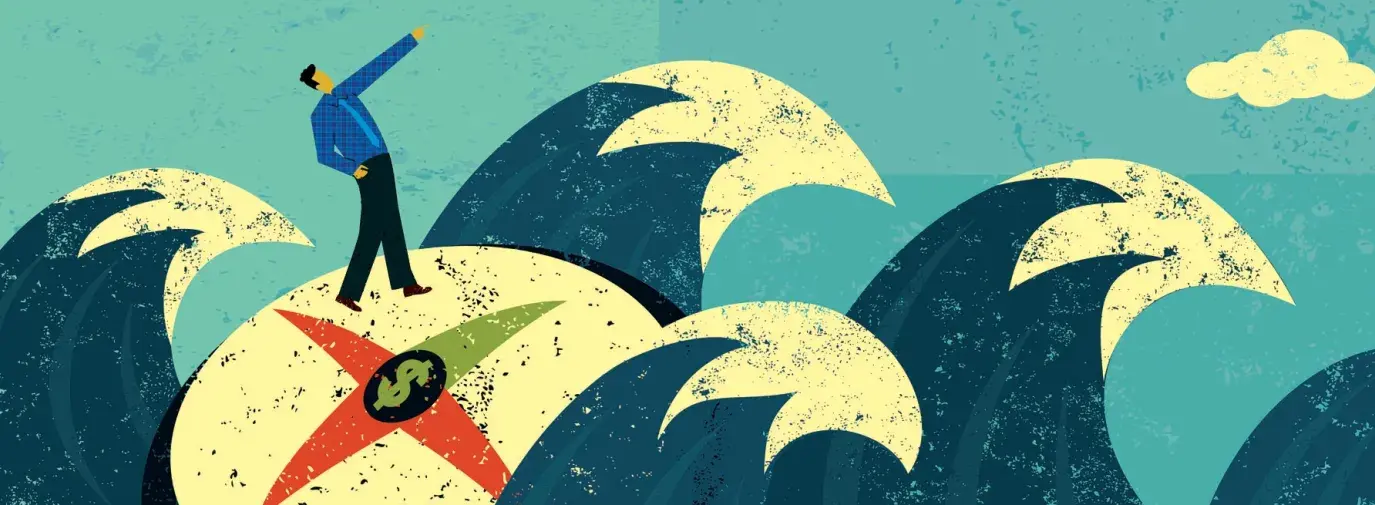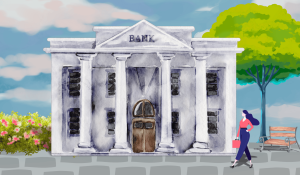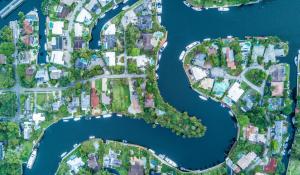
Money alone can’t secure your future and protect you against crises. That also requires investing in your community, your skill sets, your friendships, and the environment.
![m-kramer[1].jpg (275×265)](http://live-green-america-labs.pantheonsite.io/sites/default/files/2017-01/m-kramer%5B1%5D.jpg)
Financial advisor Michael Kramer, director of social research at Natural Investments, LLC and co-author of The Resilient Investor. photo: Natural Investments, LLC
What if we said that investing didn’t have to be—and, indeed, shouldn’t be—just about money? That the time and effort you put into volunteering in your city or town, planting a garden, shoring up friendships, learning new skills are all a type of investing? That’s the premise behind The Resilient Investor, a new book from Michael Kramer, Hal Brill, and Christopher Peck, three managing partners at Natural Investments, LLC who specialize in socially responsible investing (SRI), which they call “natural investing”.
Kramer, Brill, and Peck argue that in these times of financial, social, and environmental uncertainty, we all need to be able to adapt to changing circumstances and resolve potential crises, whatever they may be. While saving and investing money is part of preparing for the future, they say it’s important to remember that money isn’t all of it.
The key, they say, is to become more resilient—to be able to “anticipate and prepare for disturbance, improve the capacity to withstand shocks, rebuild as necessary, and adapt and evolve whenever possible.”
“Resilience is a powerful remedy for our uncertain times,” they write. “It helps us learn to live with the fundamental complexity of modern life. When inevitable disruptions do hit the system, resilient investors will have the best possible shock absorbers to minimize being rattled and will be positioned to bounce back even better than before.”
Can a pile of money get you out of every imaginable crisis? Kramer, Brill, and Peck say no, although as financial advisors, they are all on board with the wisdom of saving. But to be truly resilient, they say, people need to go beyond money and shore up the other facets of their lives that could help them navigate hard times: their communities, their skill sets, their friendships and connections with others.
Green America editor-in-chief Tracy Fernandez Rysavy talked to Michael Kramer about this holistic approach to investing.
![resilient-investor-cover[1].jpg (275×412)](http://live-green-america-labs.pantheonsite.io/sites/default/files/2017-01/resilient-investor-cover%5B1%5D.jpg)
Green American/Tracy Fernandez Rysavy: I loved the part in your book about how all of our investments should support Aristotle’s idea of “blessedness”. Can you explain that?
Michael Kramer: Aristotle, writing in the Nicomachean Ethics, described the point of a well-lived life, the goal we should be aiming for, as “blessedness.” How do we define the good life? In our society, perhaps we have forgotten that it’s not just money.
It’s one’s well-being and growth as a person on a spiritual, physical, emotional, and intellectual level. Our relationships with people and nature. If we neglect all that in pursuit of almighty dollar, we have forgotten why we’re here on this planet and why we’re connected.
When people become more in touch with their mission in life, the ways they can be of assistance, they can become much more conscientious about learning, about gathering the tools and knowledge and wisdom they need to be that agent of change in the world.
Being part of a family, a neighborhood, a city, a workplace—there are so many ways to leave a legacy to be proud of. Get in touch with what that is for you, and go for it. Don’t just pursue the easy dollar that may not be in alignment with your deepest purpose.
Green American/Tracy: Some people have told us they feel that investing isn’t for them, maybe because they don’t have a lot of money or they don’t trust the market. But you propose a broader definition of investing that is certainly for everyone. Everyone wants to be blessed!
Michael Kramer: [My co-authors and I] really wanted to expand the definition of investing [to note that] being strong financially isn’t only what makes you resilient. Everyone has all these other talents and assets and skill sets that make us more resilient.
For example, time is money, but we don’t realize how important time is. Investing time wisely and putting out energy intentionally can have an investment return.
The amount of volunteerism in our communities—in the nonprofit sector, religious groups, and civic organizations—also provides social and economic benefits that are significant. It creates quality of life in many respects, has significant implications for the revitalization of depressed rural or urban neighborhoods, and can help solve social problems for youth and families. We need to recognize this and encourage more of it.
Our “resilient investment” framework gives credibility to other zones of our lives like these. These other zones help you create real strength. They are necessary and need to be planned for, not just haphazardly.
So our expansion of investing applies to three different categories of assets you employ:
• financial—stocks, bonds, and savings.
• tangible, or your stuff—home, efficient energy systems, local food supply, and a healthy ecosystem.
• personal/social—relationships, community, learning, health, and spiritual growth.
We’ve created a Resilient Investor Map where all three can be used in three investment strategies.
Green American/Tracy: Before we get to all three of those investment strategies, let me ask: Why isn’t investing in financial vehicles enough to be resilient?
Michael Kramer: If you’re only investing in the global economy with financial instruments, you’re not fully diversified. Because of the inherent systemic risk in capital markets right now, revealed by the crisis of seven years ago that’s still not fixed, we think it’s more prudent to diversify to wean some of one’s assets off of the global market in order to be more resilient, in the event that systemic risks cause major problems in the future. It’s a more conservative approach in a way—we’re not assuming growth is inevitable and that the markets are always stable and can perform well.
Green American/Tracy: What does it mean to build resilience in the tangible and personal/social areas?
Michael Kramer: I can give you some examples: In the tangible asset category, consider home improvements in water catchment, energy efficiency, renewable energy, food around your home. Shopping and sharing locally by supporting a CSA, getting involved in sharing-economy networks rather than everyone having their own car or bike. Building shared infrastructure in community, like holding work parties; adopting parks and neighborhoods; being on task forces and committees, or the boards of nonprofits.
Getting involved in community to help shape local priorities. Those are just some examples of what one might do there. At the very, very personal level, [my co-authors and I] give credence to the idea that people should be investing in their own health: physical, emotional, mental. Increase their skills—learn how to make or fix things rather than buy them. There’s changing habits: turning off lights, biking instead of driving. It’s a different way of thinking about investing. We have a rule of financial planning: It’s not just what you make; it’s also what you don’t spend.
There are so many ways we could not spend by developing skills and relationships. That’s good finance, in addition to how cool it is to really learn how to do something useful, like making sauerkraut. That’s why we created the nine zones in our framework: we should put some degree of attention in all of them. Look at your life—where you’re strong and where you need attention and focus. You can then create a plan for yourself.
Green American/Tracy: What are the investment strategies, and how do you apply them to your finances?
Michael Kramer: They are the sustainable global economy strategy, the close-to-home investment strategy, and the evolutionary investment strategy, or changing rules of the game.
The close-to-home strategy brings economics back to its roots, to the household, community, and systems that support our more fundamental being. Close-to-home investing recognizes much of what we already spend time, money, and attention on are rightly considered investments. Our personal health and skills; family and home; community organizations; and intimate, professional, and community relationships are all addressed in this strategy.
Financial investments in this area might include local loan funds and investment clubs, and community banks and credit unions that are already putting capital into play—investing in affordable housing locally, for example.
Second is the sustainable global economy strategy. Much of the resilient investor’s overall strategy is likely to remain in the familiar realm of the existing global economy. That is where most of us have sought to build our assets (via salary and investment gains), and it is where we purchase most of our tangible assets: our transportation, our food, our clothes—the list goes on and on. The role of this investment strategy is to help you work within the existing system as effectively as possible, making wise decisions and sound investments that move you toward your life goals. Our approach to engaging within the global economy is, as the strategy’s name suggests, oriented toward pushing it toward higher standards of environmental ethics and social justice.
At the same time, that can’t necessarily change the system or change nature or make the kinds of improvements society needs to survive. We need new evolutionary ideas and strategies that are fundamentally and structurally different.
Evolutionary means regenerating, too. You can stop deforestation, but then you have to reforest—heal and regenerate nature.
So the evolutionary investing strategy means investing in those new models that regenerate natural systems, increase habitat, not just try not to harm them.
Evolutionary investing goes well beyond the sustainable global economy strategy, in which we focus on ways to incrementally improve the effectiveness of today’s existing structures. With evolutionary investing, the invitation is to create a new vision of the world we wish to see, and then to invest our time and money into creating that world.
Green American/Tracy: Can you give me some examples of how one might engage in evolutionary investing?
Michael Kramer: Well, we can start with the community investing piece, supporting community banks and credit unions and loan funds (see p. L). The [community investing] campaign Green America started was really wonderful, and we [at Natural Investments] continue to support that.
Community development banks, credit unions, and loan funds are already putting capital into play [in an evolutionary way, as well as locally]—investing in affordable housing and more.
Participating in Kiva or online sites directing capital through microfinance institutions around the world provides meaningful poverty-alleviation strategies.
Also, a lot of prospective and new investors are asking about investing locally. They really want to know what financial planners have to offer.
When the SEC comes up with crowdfunding rules so folks would be allowed to invest in local companies, it’ll release a huge flood of capital to a lot more startups and small enterprises. It will be very exciting. There could be a huge weaning off of Wall Street as money flows locally. Now, only accredited investors can invest in those kinds of companies.
[Editor’s note: Accredited investors are those who have a reduced need for financial protection from the government and meet the requirements of the US Securities and Exchange Commission, including having a net worth of at least $1 million and an individual annual income of $200,000+.]
Crowdfunding needs to be regulated to ensure that people play ethically and fairly. There’s a role for financial professionals here, too, to help evaluate opportunities.
If the SEC allows this type of investing for non-accredited people, that’s an evolutionary structural change [to the way we invest], because it changes the rules of the game. Millions more people will be able to direct their capital in the local economy.
That will make a fundamental difference.
Green American/Tracy: My knowledge of crowdfunding is more along the lines of Kickstarter, where people might provide funding to create, say, a video game, and when the project is complete, they get the video game. But this would be a new way of investing capital and earning returns?
Michael Kramer: Exactly. People are just pre-paying for a product now, not really investing. There’s no capital return, and that’s why Kickstarter is legal.
The SEC is currently figuring out how to regulate it. When that regulation happens, people could use the crowdfunding model to invest capital in local businesses and get a return on that capital.
Green American/Tracy: Should people invest in each of the nine sections of your map equally?
Michael Kramer: In our book, we suggested tailoring the investing approach based on one’s world view. Look at different future scenarios and reflect on your worldview.
Some people believe society is in the process of breaking down. Others think we’ll muddle through—we’ll experience a slow decline or emergency but not a full collapse.
Others think we’ll muddle upward in slow changes. Then there’s the breakthrough scenario, which anticipates huge, tranformative breakthroughs in consciousness and lifestyle, i.e. we fix fossil-fuel use as a species. Nobody knows what’s going to happen.
When people get in touch with where they are—a Doomer or a Dreamer or anything in between—they can allocate assets accordingly.
Green American/Tracy: Would you explain more about these categories?
Michael Kramer: “Doomers” might focus on making their primary investments according to the close-to-home strategy, with survivalists focusing more on personal and tangible assets.
Those Doomers who are trying to create a “soft landing” by working together to survive a post-industrial world might put significant energy into community and regional resilience.
“Dreamers” have great faith in humanity’s evolutionary destiny and are eager to be in the vanguard of change they want to see. Most of a Dreamer’s investing will be directed toward an evolutionary strategy, with a significant focus on building healthy and sustainable homes and communities.
“Dealers” buy heavily into the idea that we’ll muddle through our societal crises, so they’ll emphasize investment in a sustainable global economy strategy while leaning away from investments and personal choices with negative social or environmental consequences—with some investments put toward local and personal resilience that provide a buffer against systemic upsets.
“Dualists” are pretty sure we cannot keep going the way we have and can easily see the potential for either breakdown or breakthrough. They’ll be heavily invested in close-to-home and evolutionary strategies, with participation in the global economy focused on green technologies and necessary tangible goods.
And “Drivers” are eco-techno optimists, so they’ll put a lot of juice into new technology and renewable energy. They also emphasize the evolutionary strategy, especially social networking and building global community.
Then there are “Dancers,” who have some degree of investment in each one of the nine zones.
When people tap into what their values are, it can inform allocation, and that is the most resilient way to be.
Green American/Tracy: Which one are you?
The Resilient Investor Map contains nine zones across three kinds of assets and three investment strategies. Resilient investors will give attention to all nine.
![resilient-chart[1].gif (338×364)](http://live-green-america-labs.pantheonsite.io/sites/default/files/2017-01/resilient-chart%5B1%5D.gif)
Michael Kramer: I’m the Dreamer in the book. I’m always imagining how things could be better and then trying to do something about it. It’s not that I’m ignoring the problems, but I’m focused on the solutions. I have a belief I can change systems by being involved. I’m on the National Policy Committee for US SIF, and involved in working with Congress.
So I invest time and money in creating more resilience on a personal level—my own food and energy and my own way of life—because I want to live by my ideals.
I’m also always wanting to try the latest, most innovative investment opportunity. Some people think, “Oh! New idea! Too risky!” I’m always one of the early adopters. I take a hard look, study, do extra due diligence, but I’ll often go for it. If you want to bring dreams into reality, you have to go for them.
Green American/Tracy: What I love about your framework is that it can apply to nearly everything we do as Green Americans. So anything you do for a green economy is resilient investing, even if you don’t have a lot of extra money.
Michael Kramer: People who don’t have a lot of money should still absolutely feel great about themselves. Look at all the other assets you have!







